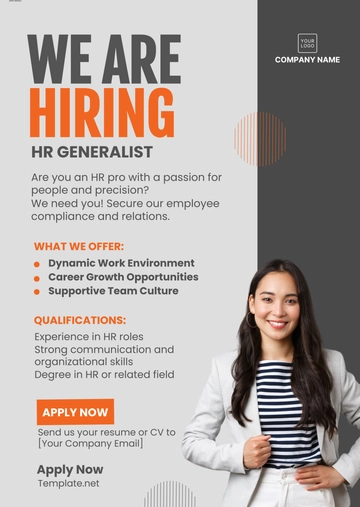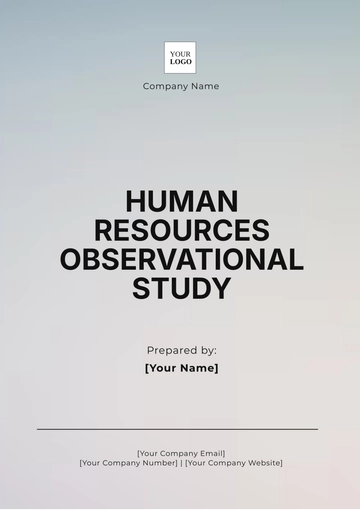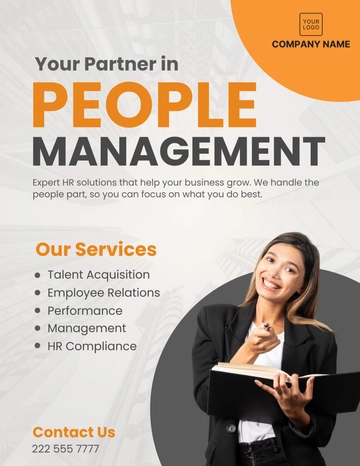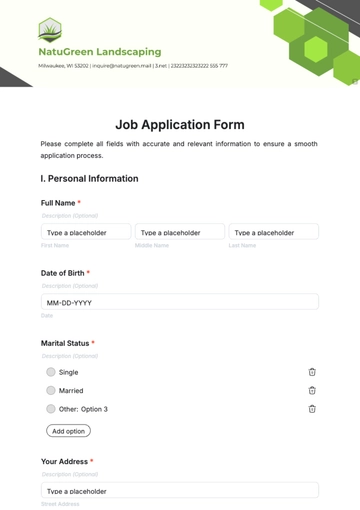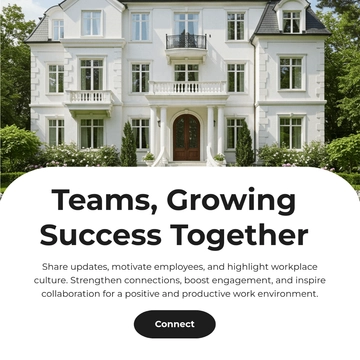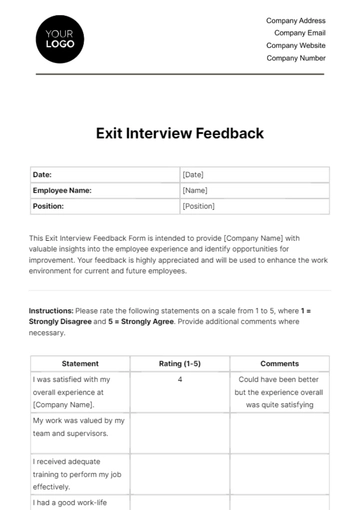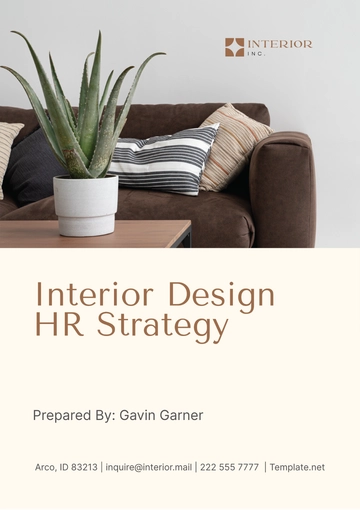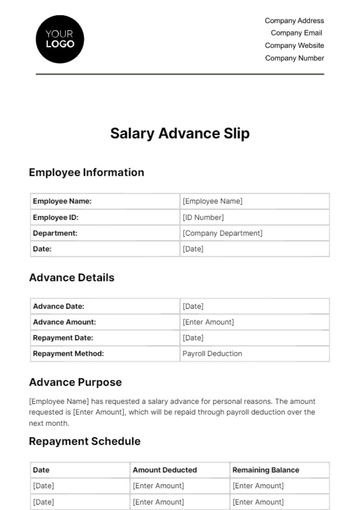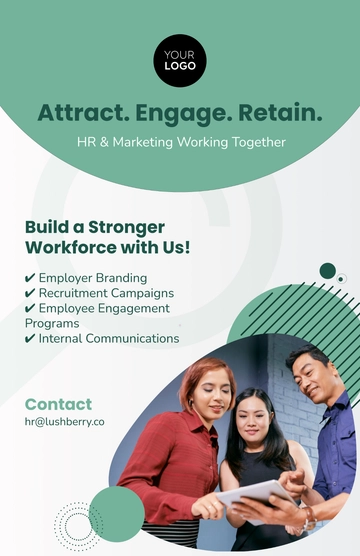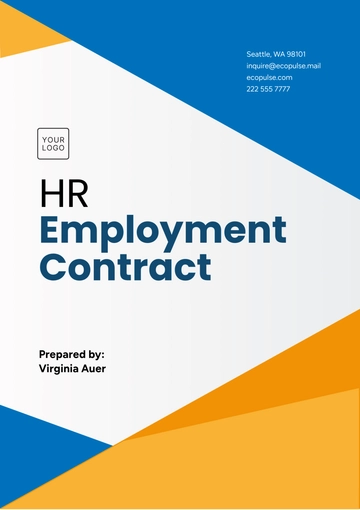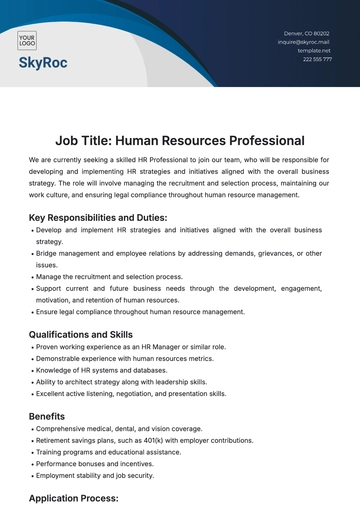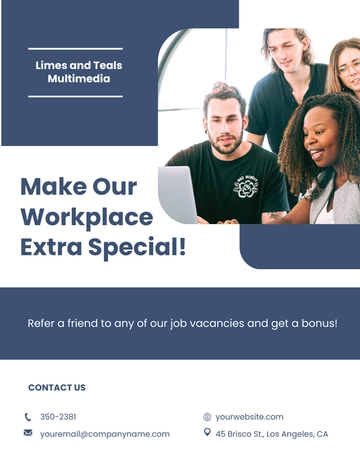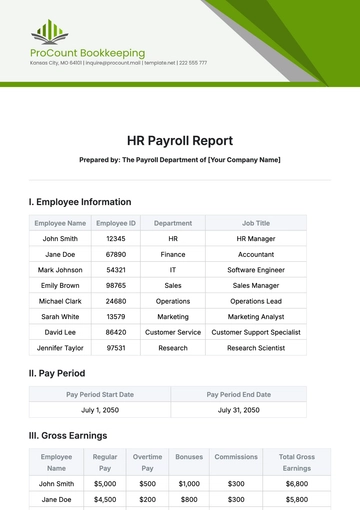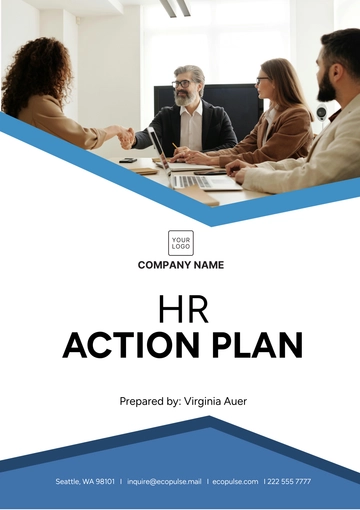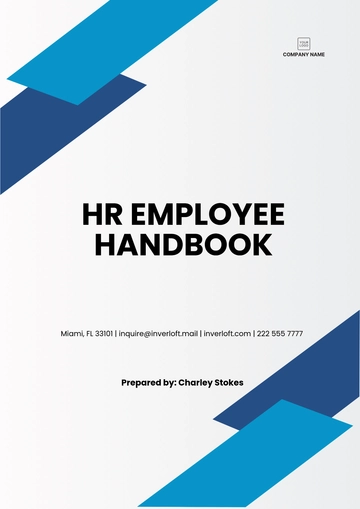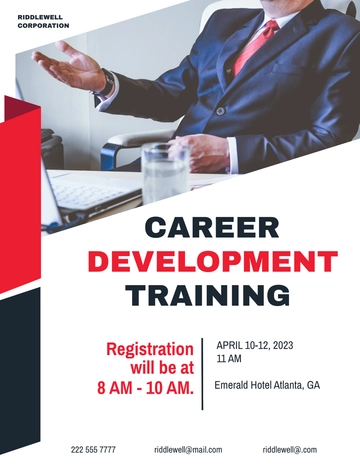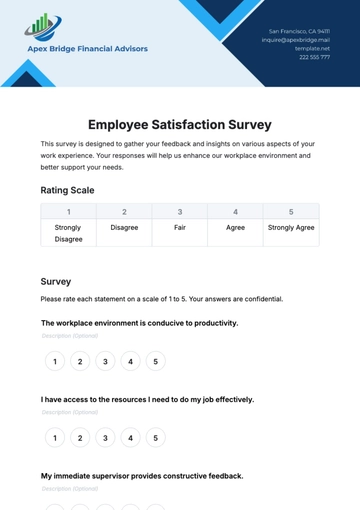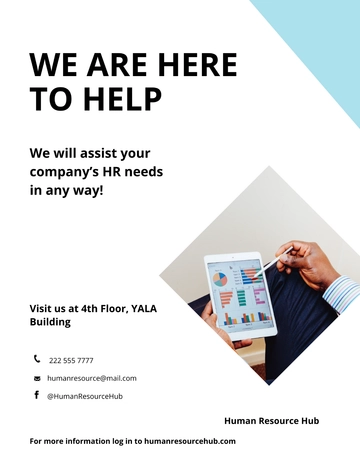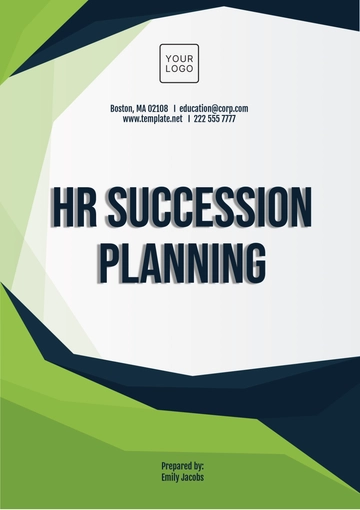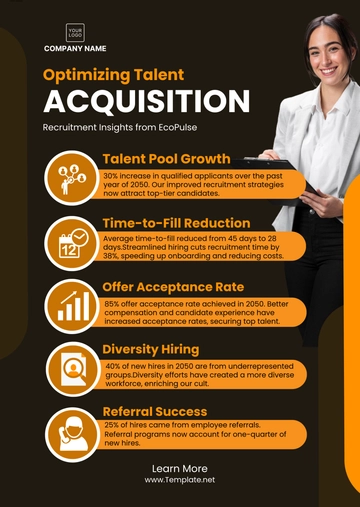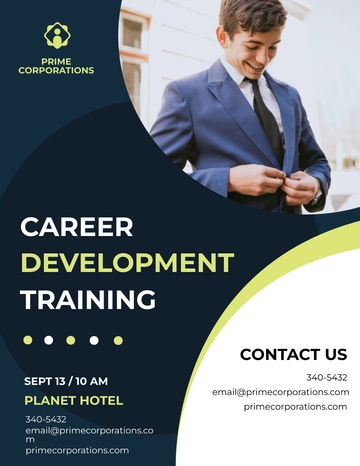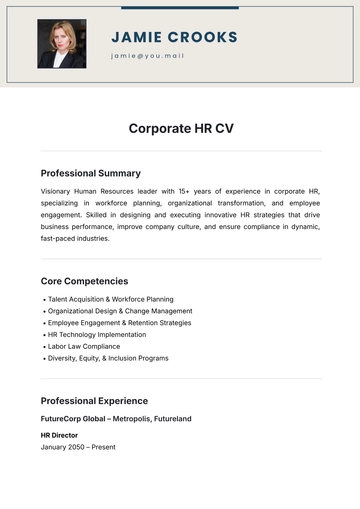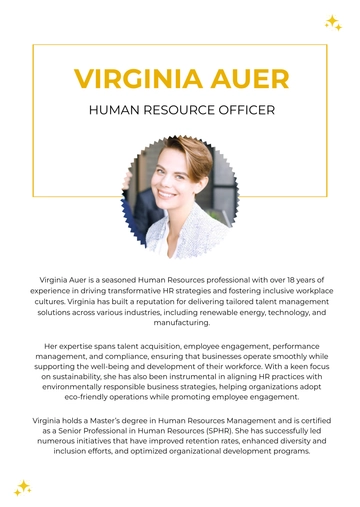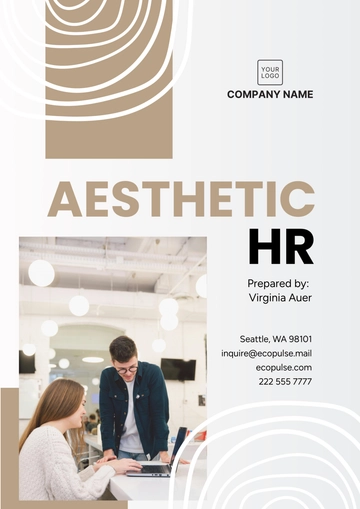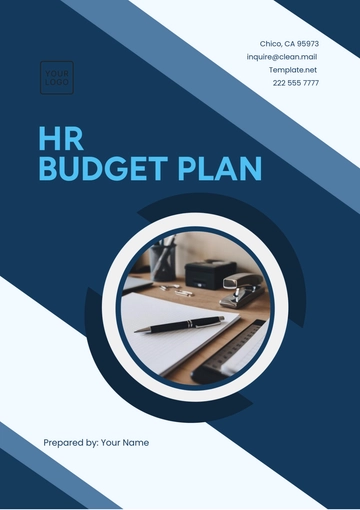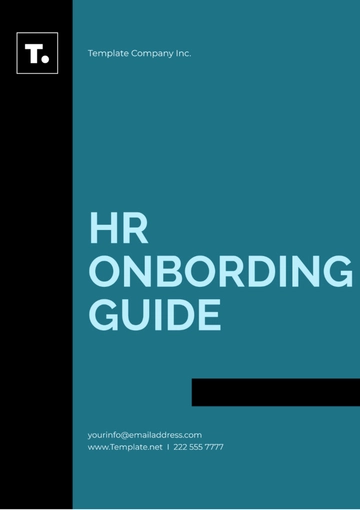Free Gym HR Strategy
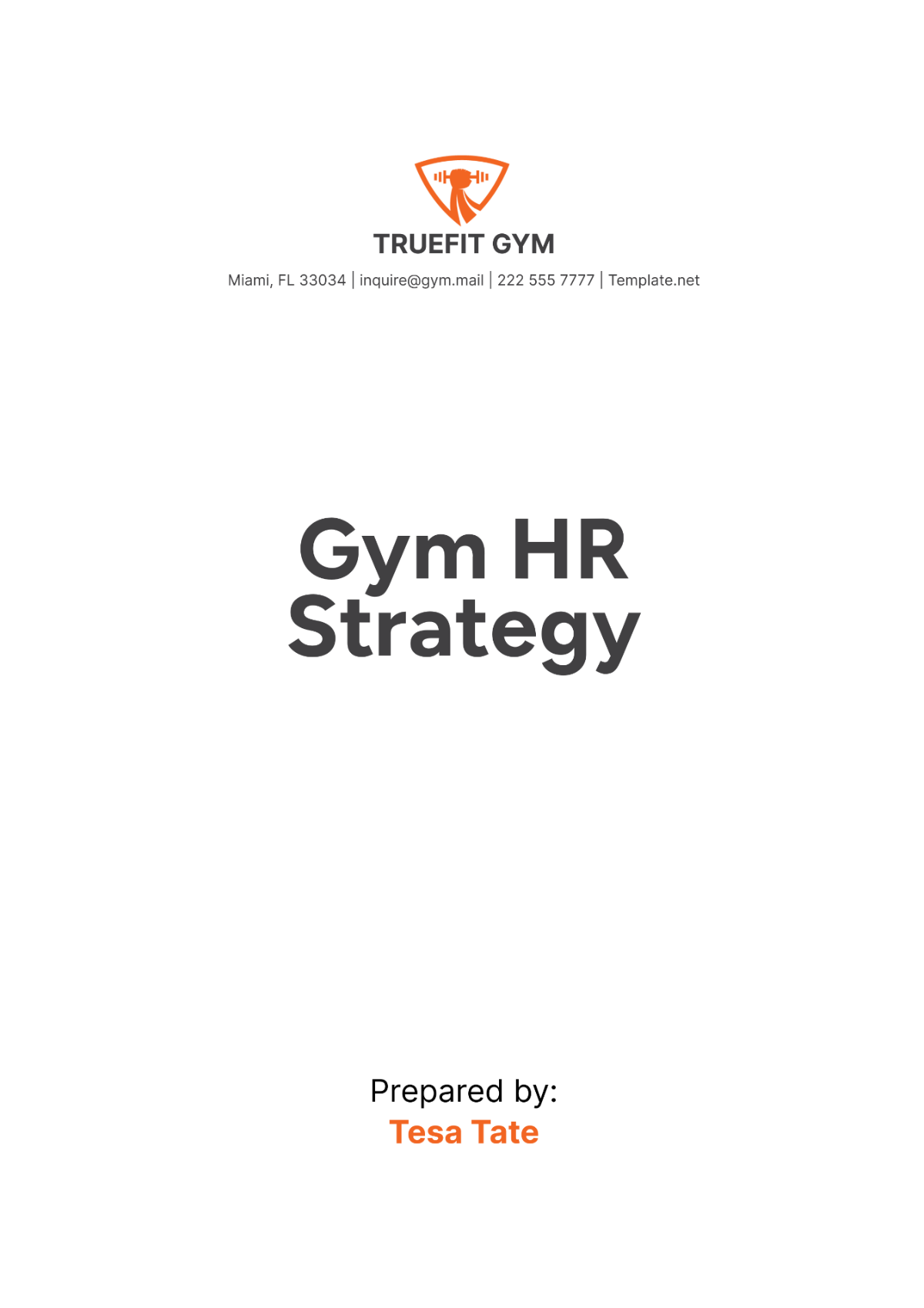
I. Executive Summary
This HR Strategy of [Your Company Name] outlines the comprehensive approach our gym will take to attract, develop, and retain talented staff members who will contribute to the success and growth of our organization. This strategy is designed to ensure that our HR practices align with our mission, vision, and goals, creating a positive and productive work environment.
The strategy covers key areas such as recruitment, training and development, performance management, compensation and benefits, and employee engagement. It includes detailed processes, policies, and best practices to guide our HR efforts and ensure consistency and fairness in all our interactions with staff.
By implementing this strategy, [Your Company Name] aims to create a motivated, skilled, and high-performing workforce. This strategy will support our long-term goals, enhance our service delivery, and ultimately improve the overall member experience.
II. Recruitment and Hiring
The following table outlines the recruitment and hiring process at [Your Company Name]:
No. | Step | Description |
|---|---|---|
1 | Job Analysis | Conduct a detailed job analysis to identify key responsibilities and qualifications. |
2 | Job Posting | Create and post job advertisements on various platforms. |
3 | Screening and Shortlisting | Screen applications and shortlist candidates based on qualifications and experience. |
4 | Interviewing | Conduct interviews to assess candidates' skills, experience, and fit. |
5 | Selection and Offer | Select the best candidate and extend a job offer. |
A. Job Analysis
Identify Key Responsibilities: Conduct a detailed analysis of each position to identify key responsibilities and tasks. This helps in defining clear job roles and expectations.
Determine Qualifications: Determine the necessary qualifications, skills, and experience required for the role. This ensures that candidates meet the job requirements.
Update Job Descriptions: Regularly update job descriptions to reflect current responsibilities and expectations. This helps in maintaining clarity and relevance.
B. Job Posting
Create Job Advertisements: Develop comprehensive job advertisements that highlight the key responsibilities, qualifications, and benefits of the position. This attracts qualified candidates.
Post on Various Platforms: Post job advertisements on various platforms, including job boards, social media, and our company website. This increases visibility and reach.
Utilize Networks: Utilize professional networks and industry contacts to spread the word about job openings. This helps in attracting a diverse pool of candidates.
C. Screening and Shortlisting
Review Applications: Review applications to assess candidates' qualifications and experience. This helps in identifying the most suitable candidates for the role.
Shortlist Candidates: Shortlist candidates based on their qualifications, experience, and alignment with the job requirements. This streamlines the selection process.
Conduct Initial Screenings: Conduct initial phone or video screenings to further assess candidates' suitability for the role. This helps in narrowing down the pool of candidates.
D. Interviewing
Prepare Interview Questions: Prepare a set of structured interview questions to assess candidates' skills, experience, and fit with the company culture. This ensures consistency and fairness.
Conduct Interviews: Conduct interviews with shortlisted candidates, involving relevant team members and stakeholders. This provides a comprehensive assessment of the candidates.
Evaluate Candidates: Evaluate candidates based on their responses, skills, and overall fit with the organization. This helps in selecting the best candidate for the role.
E. Selection and Offer
Select the Best Candidate: Based on the interview evaluations, select the candidate who best meets the job requirements and aligns with our company values. This ensures a good fit.
Extend a Job Offer: Extend a formal job offer to the selected candidate, including details of the position, salary, and benefits. This initiates the onboarding process.
Negotiate Terms: If necessary, negotiate the terms of the job offer to ensure mutual agreement. This helps in finalizing the hiring process.
Effective recruitment and hiring are crucial for attracting talented individuals who align with our values and goals. By following a structured process, [Your Company Name] can ensure that we select the best candidates and build a strong, capable team.
III. Training and Development
The following table showcases the training and development process at [Your Company Name]:
No. | Step | Description |
|---|---|---|
1 | Needs Assessment | Conduct a training needs assessment to identify skill gaps and development needs. |
2 | Training Programs | Develop and implement training programs to address identified needs. |
3 | On-the-Job Training | Provide on-the-job training to reinforce skills and knowledge. |
4 | Continuous Learning | Encourage continuous learning through workshops, seminars, and courses. |
5 | Evaluation and Feedback | Evaluate the effectiveness of training programs and provide feedback. |
A. Needs Assessment
Identify Skill Gaps: Conduct a comprehensive assessment to identify skill gaps and development needs within the organization. This helps in prioritizing training efforts.
Gather Input: Gather input from managers, employees, and stakeholders to understand training needs and preferences. This ensures that training programs are relevant and effective.
Analyze Data: Analyze the data collected during the assessment to identify key areas for development. This helps in creating targeted training programs.
B. Training Programs
Develop Training Programs: Develop training programs that address the identified skill gaps and development needs. This ensures that employees receive the necessary training to improve their performance.
Implement Training Programs: Implement training programs through various methods, including classroom training, online courses, and workshops. This provides flexibility and accessibility.
Customize Training: Customize training programs to meet the specific needs of different departments and roles. This ensures that training is relevant and impactful.
C. On-the-Job Training
Provide Hands-On Training: Provide on-the-job training to reinforce skills and knowledge in a practical setting. This helps employees apply what they have learned.
Mentorship Programs: Implement mentorship programs to provide employees with guidance and support from experienced colleagues. This enhances learning and development.
Real-Time Feedback: Provide real-time feedback during on-the-job training to help employees improve their performance. This supports continuous improvement.
D. Continuous Learning
Encourage Learning: Encourage employees to participate in continuous learning through workshops, seminars, and courses. This fosters a culture of lifelong learning.
Provide Resources: Provide resources and opportunities for employees to pursue additional training and development. This supports their professional growth.
Recognize Achievements: Recognize and reward employees for their commitment to continuous learning. This motivates employees to continue developing their skills.
E. Evaluation and Feedback
Evaluate Training Effectiveness: Evaluate the effectiveness of training programs through assessments and feedback. This helps in identifying areas for improvement.
Gather Feedback: Gather feedback from employees and managers on the training programs. This provides insights into the program's impact and relevance.
Make Improvements: Use the feedback to make necessary improvements to the training programs. This ensures that training remains effective and meets the needs of the organization.
Continuous training and development are essential for enhancing employees' skills and supporting their professional growth. By conducting needs assessments, developing training programs, providing on-the-job training, encouraging continuous learning, and evaluating effectiveness, [Your Company Name] can ensure that employees have the skills and knowledge needed to succeed.
IV. Performance Management
The following table presents the performance management process at [Your Company Name]:
No. | Step | Description |
|---|---|---|
1 | Goal Setting | Set clear performance goals and expectations for employees. |
2 | Performance Monitoring | Regularly monitor and track employee performance. |
3 | Feedback and Coaching | Provide feedback and coaching to support employee development. |
4 | Performance Reviews | Conduct formal performance reviews to assess employee performance. |
5 | Performance Improvement | Develop and implement performance improvement plans as needed. |
A. Goal Setting
Set Clear Goals: Set clear and specific performance goals for employees. This provides direction and helps employees understand what is expected of them.
Align with Objectives: Ensure that individual goals align with the overall objectives of the gym. This ensures that everyone is working towards the same goals.
Regular Updates: Regularly update and adjust goals as needed to reflect changes in priorities or circumstances. This helps in maintaining relevance and focus.
B. Performance Monitoring
Track Progress: Regularly monitor and track employee performance against set goals. This helps in identifying any issues early and taking corrective action.
Use Performance Metrics: Use performance metrics and indicators to measure employee performance. This provides an objective assessment of performance.
Document Performance: Maintain detailed records of employee performance. This helps in providing accurate feedback and support during reviews.
C. Feedback and Coaching
Provide Regular Feedback: Provide regular feedback to employees on their performance. This helps in reinforcing positive behaviors and addressing areas for improvement.
Conduct Coaching Sessions: Conduct coaching sessions to support employee development and help them overcome challenges. This enhances performance and growth.
Encourage Open Communication: Encourage open communication between employees and managers. This fosters a positive and supportive work environment.
D. Performance Reviews
Conduct Formal Reviews: Conduct formal performance reviews to assess employee performance over a specific period. This provides a comprehensive evaluation.
Use Evaluation Criteria: Use clear evaluation criteria to assess performance. This ensures consistency and fairness in the review process.
Discuss Development Plans: During performance reviews, discuss development plans and career goals with employees. This helps in supporting their growth and advancement.
E. Performance Improvement
Develop Improvement Plans: Develop performance improvement plans for employees who need additional support. This helps in addressing performance issues and setting clear expectations.
Provide Resources and Support: Provide the necessary resources and support to help employees improve their performance. This may include training, mentoring, or additional coaching.
Monitor Progress: Regularly monitor the progress of employees on performance improvement plans. This ensures that they are on track and making the necessary improvements.
Effective performance management is essential for setting expectations, providing feedback, and supporting employee development. By setting clear goals, monitoring performance, providing feedback and coaching, conducting performance reviews, and developing improvement plans, [Your Company Name] can ensure that employees are motivated, engaged, and performing at their best.
V. Compensation and Benefits
The following table showcases the compensation and benefits process at [Your Company Name]:
No. | Step | Description |
|---|---|---|
1 | Market Research | Conduct market research to determine competitive compensation and benefits. |
2 | Salary Structure | Develop a salary structure based on market data and internal equity. |
3 | Benefits Package | Design a comprehensive benefits package that meets employees' needs. |
4 | Compensation Reviews | Regularly review and adjust compensation to ensure competitiveness. |
5 | Communication | Communicate compensation and benefits information to employees. |
A. Market Research
Conduct Research: Conduct market research to determine competitive compensation and benefits for similar roles in the industry. This helps in attracting and retaining talented employees.
Analyze Data: Analyze the data collected from market research to identify trends and benchmarks. This provides insights into competitive compensation practices.
Identify Gaps: Identify any gaps between current compensation and market standards. This helps in making necessary adjustments to remain competitive.
B. Salary Structure
Develop Salary Ranges: Develop salary ranges for different roles based on market data and internal equity. This ensures fairness and competitiveness.
Review Regularly: Regularly review and update the salary structure to reflect changes in the market and organizational needs. This helps in maintaining competitiveness.
Ensure Transparency: Ensure transparency in the salary structure and communicate it clearly to employees. This fosters trust and understanding.
C. Benefits Package
Design Comprehensive Benefits: Design a comprehensive benefits package that meets employees' needs and preferences. This includes health insurance, retirement plans, and other perks.
Review Benefits Regularly: Regularly review and update the benefits package to ensure it remains competitive and relevant. This helps in attracting and retaining employees.
Offer Flexible Options: Offer flexible benefits options to meet the diverse needs of employees. This enhances employee satisfaction and engagement.
D. Compensation Reviews
Conduct Regular Reviews: Conduct regular reviews of compensation to ensure it remains competitive with the market. This helps in retaining talented employees.
Adjust Compensation: Make necessary adjustments to compensation based on market data and organizational needs. This ensures fairness and competitiveness.
Monitor Trends: Monitor industry trends and benchmarks to stay updated with competitive compensation practices. This helps in maintaining an attractive compensation package.
E. Communication
Communicate Clearly: Communicate compensation and benefits information clearly to employees. This helps in ensuring understanding and transparency.
Provide Information: Provide detailed information on the components of the compensation and benefits package. This helps employees understand the value of their total rewards.
Address Questions: Address any questions or concerns employees may have about their compensation and benefits. This fosters trust and satisfaction.
A competitive compensation and benefits package is essential for attracting and retaining talented employees. By conducting market research, developing a salary structure, designing a comprehensive benefits package, conducting compensation reviews, and communicating clearly, [Your Company Name] can ensure that employees feel valued and rewarded for their contributions.
VI. Employee Engagement
The following table outlines the employee engagement process at [Your Company Name]:
No. | Step | Description |
|---|---|---|
1 | Employee Surveys | Conduct regular employee surveys to gather feedback and assess engagement levels. |
2 | Engagement Programs | Develop and implement engagement programs to enhance employee satisfaction. |
3 | Recognition and Rewards | Implement recognition and rewards programs to acknowledge employee contributions. |
4 | Team Building | Organize team-building activities to foster collaboration and teamwork. |
5 | Open Communication | Encourage open communication and provide channels for employees to voice their concerns. |
A. Employee Surveys
Conduct Surveys: Conduct regular employee surveys to gather feedback on various aspects of the work environment. This helps in assessing engagement levels and identifying areas for improvement.
Analyze Results: Analyze the survey results to understand the key drivers of employee engagement. This provides insights into employee satisfaction and areas for action.
Act on Feedback: Develop action plans based on the survey feedback to address any concerns and improve engagement. This demonstrates a commitment to employee well-being.
B. Engagement Programs
Develop Programs: Develop and implement engagement programs that enhance employee satisfaction and motivation. This includes initiatives such as wellness programs, professional development opportunities, and social events.
Involve Employees: Involve employees in the design and implementation of engagement programs. This ensures that programs are relevant and meet employees' needs.
Measure Impact: Measure the impact of engagement programs to assess their effectiveness. This helps in making necessary adjustments and improvements.
C. Recognition and Rewards
Implement Recognition Programs: Implement recognition programs to acknowledge and celebrate employee contributions and achievements. This includes employee of the month awards, peer recognition, and other incentives.
Provide Rewards: Provide meaningful rewards that align with employees' preferences and achievements. This helps in motivating employees and enhancing their satisfaction.
Promote Recognition Culture: Promote a culture of recognition where employees feel valued and appreciated. This fosters a positive work environment and enhances engagement.
D. Team Building
Organize Activities: Organize team-building activities that foster collaboration and teamwork. This includes workshops, retreats, and social events.
Encourage Participation: Encourage all employees to participate in team-building activities. This helps in building strong relationships and improving communication.
Evaluate Effectiveness: Evaluate the effectiveness of team-building activities to ensure they meet the desired objectives. This helps in making necessary adjustments.
E. Open Communication
Encourage Communication: Encourage open communication between employees and management. This includes regular meetings, feedback sessions, and open-door policies.
Provide Channels: Provide multiple channels for employees to voice their concerns, suggestions, and feedback. This ensures that employees feel heard and valued.
Act on Feedback: Act on the feedback received from employees to address their concerns and improve the work environment. This demonstrates a commitment to employee well-being.
Engaging employees is essential for creating a positive work environment and enhancing productivity. By conducting employee surveys, developing engagement programs, implementing recognition and rewards, organizing team-building activities, and encouraging open communication, [Your Company Name] can ensure that employees feel valued, motivated, and engaged.
VII. Diversity and Inclusion
The following table presents the diversity and inclusion process at [Your Company Name]:
No. | Step | Description |
|---|---|---|
1 | Inclusive Hiring | Implement inclusive hiring practices to attract diverse talent. |
2 | Training and Awareness | Provide training and awareness programs on diversity and inclusion. |
3 | Employee Resource Groups | Support the formation of employee resource groups to foster inclusion. |
4 | Monitor and Evaluate | Regularly monitor and evaluate diversity and inclusion initiatives. |
A. Inclusive Hiring
Implement Practices: Implement inclusive hiring practices that attract diverse talent. This includes using diverse recruitment channels, creating inclusive job descriptions, and ensuring unbiased selection processes.
Train Recruiters: Provide training for recruiters and hiring managers on inclusive hiring practices. This helps in reducing biases and ensuring a fair selection process.
Promote Diversity: Actively promote diversity in job advertisements and recruitment campaigns. This helps in attracting a diverse pool of candidates.
B. Training and Awareness
Develop Programs: Develop training and awareness programs on diversity and inclusion. This includes workshops, seminars, and online courses.
Educate Employees: Educate employees on the importance of diversity and inclusion and how to promote it in the workplace. This helps in creating a more inclusive environment.
Encourage Participation: Encourage all employees to participate in diversity and inclusion training programs. This ensures that everyone is aware of the gym's commitment to these values.
C. Employee Resource Groups
Support Formation: Support the formation of employee resource groups (ERGs) that foster inclusion and provide support for diverse groups. This includes providing resources and funding.
Encourage Participation: Encourage employees to participate in ERGs. This helps in building a sense of community and belonging.
Recognize Contributions: Recognize and celebrate the contributions of ERGs to the gym's diversity and inclusion efforts. This highlights the importance of these groups.
D. Monitor and Evaluate
Track Progress: Regularly monitor and evaluate the progress of diversity and inclusion initiatives. This helps in assessing their effectiveness and making necessary adjustments.
Gather Feedback: Gather feedback from employees on the effectiveness of diversity and inclusion initiatives. This provides insights into areas for improvement.
Report Findings: Report the findings of diversity and inclusion evaluations to senior management. This ensures transparency and accountability.
Promoting diversity and inclusion is essential for creating a supportive and equitable work environment. By developing a diversity policy, implementing inclusive hiring practices, providing training and awareness, supporting employee resource groups, and monitoring and evaluating initiatives, [Your Company Name] can ensure a diverse and inclusive workplace.
VIII. Health and Safety
The following table outlines the health and safety process at [Your Company Name]:
No. | Step | Description |
|---|---|---|
1 | Risk Assessment | Conduct regular risk assessments to identify potential hazards. |
2 | Safety Training | Provide safety training for all employees. |
3 | Emergency Preparedness | Develop and implement emergency preparedness plans. |
4 | Monitor and Review | Regularly monitor and review health and safety practices. |
A. Risk Assessment
Identify Hazards: Conduct regular risk assessments to identify potential hazards in the workplace. This helps in taking preventive measures to mitigate risks.
Evaluate Risks: Evaluate the identified risks to determine their severity and likelihood. This helps in prioritizing safety measures.
Implement Controls: Implement control measures to mitigate identified risks. This includes providing safety equipment, training, and procedures.
B. Safety Training
Develop Programs: Develop safety training programs for all employees. This includes training on emergency procedures, equipment usage, and safety protocols.
Conduct Training: Conduct regular safety training sessions to ensure that all employees are aware of safety procedures and protocols. This helps in preventing accidents and injuries.
Update Training: Regularly update safety training programs to reflect changes in safety regulations and best practices. This ensures that training remains relevant and effective.
C. Emergency Preparedness
Develop Plans: Develop and implement emergency preparedness plans that outline procedures for handling emergencies. This includes evacuation plans, first aid procedures, and emergency contact information.
Conduct Drills: Conduct regular emergency drills to ensure that employees are familiar with emergency procedures. This helps in ensuring a prompt and effective response during emergencies.
Review Plans: Regularly review and update emergency preparedness plans to ensure their effectiveness. This helps in maintaining readiness for emergencies.
D. Monitor and Review
Monitor Practices: Regularly monitor health and safety practices to ensure compliance with safety policies and regulations. This helps in identifying areas for improvement.
Conduct Inspections: Conduct regular safety inspections to identify any safety issues or hazards. This helps in maintaining a safe work environment.
Gather Feedback: Gather feedback from employees on health and safety practices. This provides insights into areas for improvement.
Ensuring the health and safety of employees is essential for creating a safe and productive work environment. By developing a safety policy, conducting risk assessments, providing safety training, implementing emergency preparedness plans, and monitoring and reviewing practices, [Your Company Name] can ensure a safe workplace for all employees.
IX. Conclusion and Next Steps
A. Conclusion
This HR Strategy of [Your Company Name] outlines a comprehensive approach to managing and supporting our workforce. By focusing on key areas such as recruitment, training and development, performance management, compensation and benefits, employee engagement, diversity and inclusion, and health and safety, we aim to create a positive and productive work environment.
Implementing this strategy will help [Your Company Name] attract, develop, and retain talented employees who are committed to our mission and values. By fostering a culture of continuous improvement and providing the necessary resources and support, we can ensure that our employees are motivated, engaged, and equipped to contribute to the success of our gym.
B. Next Steps
The following next steps outline the actions [Your Company Name] will take to implement and continuously improve the HR strategy:
Review and Finalize Strategy: Review and finalize the HR strategy with input from key stakeholders. Ensure alignment with organizational goals and values.
Communicate Strategy: Communicate the HR strategy to all employees and stakeholders. Provide clarity on the goals, processes, and expectations.
Implement Training Programs: Develop and implement training programs to support the execution of the HR strategy. Ensure that all employees are aware of their roles and responsibilities.
Monitor Progress: Regularly monitor the progress of the HR strategy implementation. Gather feedback and make necessary adjustments to ensure effectiveness.
Continuous Improvement: Foster a culture of continuous improvement by regularly reviewing and updating the HR strategy. Ensure that it remains relevant and effective in meeting the needs of the organization and employees.
By following these next steps, [Your Company Name] can successfully implement the HR strategy and achieve its goals. The commitment to continuous improvement will ensure that our HR practices remain effective and aligned with the evolving needs of our employees and the organization.
- 100% Customizable, free editor
- Access 1 Million+ Templates, photo’s & graphics
- Download or share as a template
- Click and replace photos, graphics, text, backgrounds
- Resize, crop, AI write & more
- Access advanced editor
Develop strategic hr strategy with the Gym HR Strategy Template from Template.net! This template is customizable to align with your gym's HR goals and objectives. Its editable features allow for tailored strategies that address your needs. Utilize the AI Editor Tool for detailed planning, ensuring your strategy enhances organizational growth!
